Gunkanjima Island
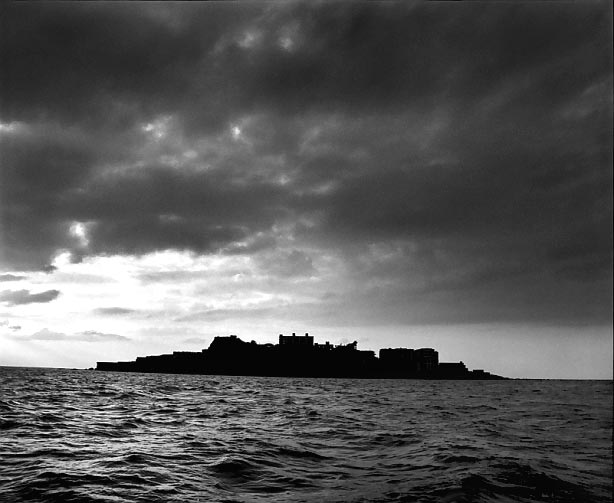 [Image: Gunkanjima Island (via)].
[Image: Gunkanjima Island (via)]."Off the westernmost coast of Japan, is an island called 'Gunkanjima' that is hardly known even to the Japanese. Long ago, the island was nothing more than a small reef. Then in 1810, [with] the chance discovery of coal ... people came to live here, and through coal mining the reef started to expand continuously. Befor [sic] long, the reef had grown into an artificial island of one kilometer (three quarters of a mile) in perimeter, with a population of 5300. Looming above the ocean, it appeared a concrete labyrinth of many-storied apartment houses and mining structures built closely together.
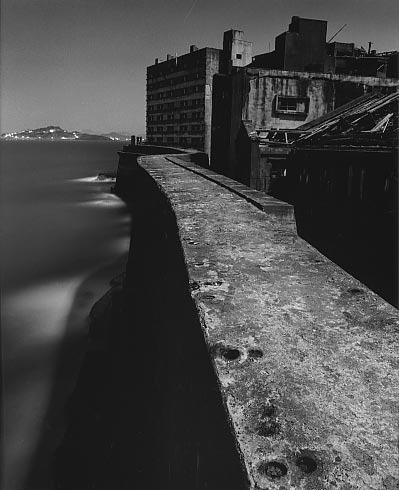

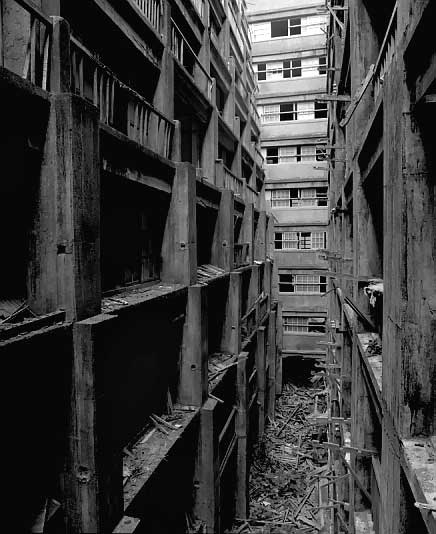
 [Images: Gunkanjima Island (via)].
[Images: Gunkanjima Island (via)].Seen from the ocean, the silhouette of the island closely resembled a battleship – so, the island came to be called Gunkanjima, or Battleship Island."
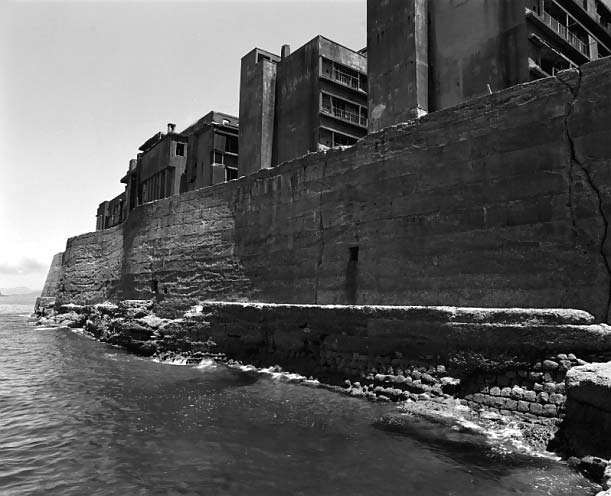 [Image: Gunkanjima Island (via)].
[Image: Gunkanjima Island (via)].The idea of an entirely artificial mining island seems to lie somewhere between James Bond and Greek mythology. I've always wanted to write a short story about a mineral-rich island where a man similar to Conrad's Kurtz sets up a mining operation; in mining the mineral wealth of his new little island, the architecture and structural engineering – the gantries, vaults, platforms, roads, etc. – come to be built from the island itself. Eventually the island entirely disappears beneath the waterline, mined down to nothing – and yet a small stilt-city of mining platforms, engineering decks, control rooms, and cantilevered walkways still exists there, built from the island it all now replaces.
In The Scar by China Miéville, there's a floating city made from tightly lashed-together hulls of ships, built so densely that, for those deep within it, it appears simply to be a particularly over-built – albeit floating – island. The rudders and keels of old boats cut through the water at angles contrary to the direction that the ship-island floats in, and thousands of anchors secure the city in place when it needs to find harbor.
What seems to be missing, at least to my experience, from architectural history & design courses are things like – drum roll – offshore mining derricks. Once again, it seems the wrong people are teaching our design labs: instead of more M.Arch grads who've read too much – or not enough – Deleuze, we need to bring in junior executives from BP or Halliburton, geologists and NASA engineers, and put them into dialogue with Situationism – and, why not, with China Miéville. Science fiction writers. Get ideas out of the one side, practical engineering science out of the other, and shebang...
What could that produce...? is a legitimate question. A terrible example, but still marginally interesting I think, would be something like the Burning Man festival, thrown not in the desert but in the middle of the Atlantic Ocean. A joint-venture between BP, Halliburton, and Peter Cook of Archigram. And the Mars Homestead Project. Seaborne utopias. Platform cities. Perhaps Atlantis was built by a battalion of rogue Roman engineers lost to history.
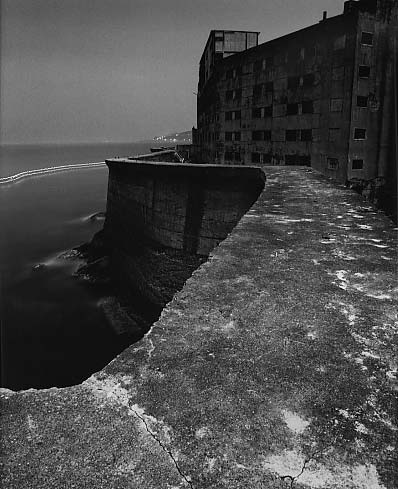 [Image: Gunkanjima Island (via)].
[Image: Gunkanjima Island (via)].It's not Damien Hirst, Daniel Libeskind, Matthew Barney, or Norman Foster we should be watching, neither artistically nor architecturally, I mean; it's the Chief Operating Officers of offshore oil-services firms. The architectural patrons of today are not avant-garde, middle class Connecticut home-owners but logistical managers in the US Department of Energy. New building types are not being discovered or invented in the design labs of American architectural offices, but in the flowcharts and budgetary projection worksheets of multinational petrochemical firms. Forget Spiral Jetty – we need a platform city built above the mid-Atlantic rift, an uninhabited, reinforced concrete archipelago ideal for untrained astronomical observation. The Reef Foundation – you win their residency grant and get to spend six months alone staring at the sun on a perfectly calibrated Quikrete lily pad.
We need the wastrel sons of hedge fund billionaires out there patronizing manmade archipelagos in the South China Sea.
We need more Gunkanjima Islands.
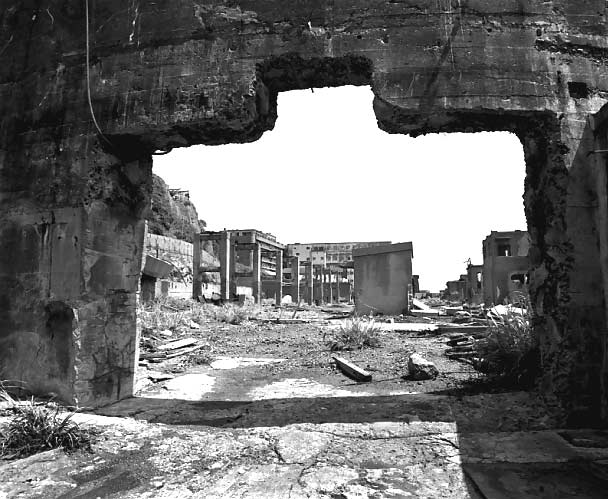 [Image: Gunkanjima Island (via)].
[Image: Gunkanjima Island (via)].




